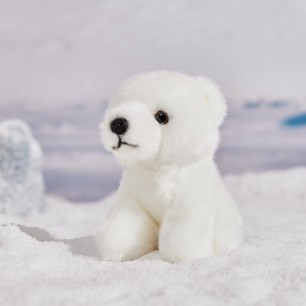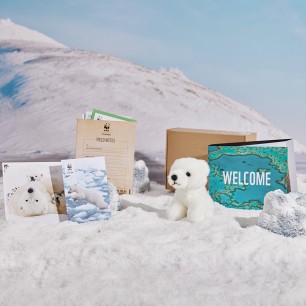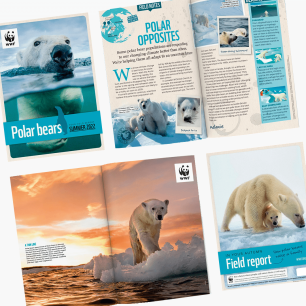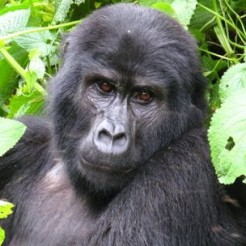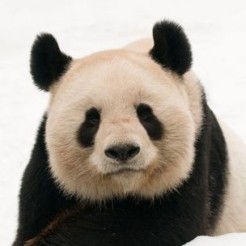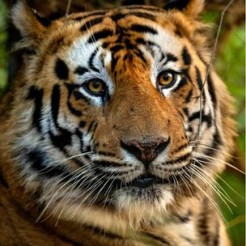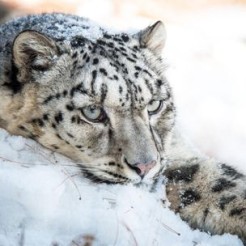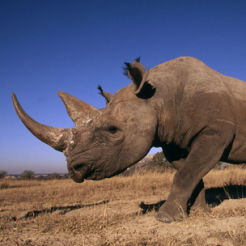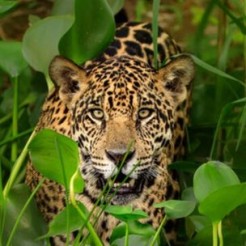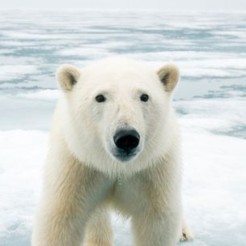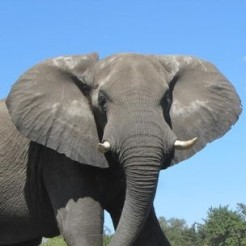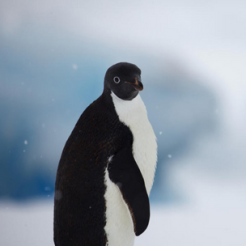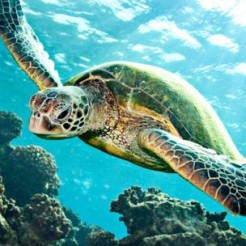Magnificent polar bears depend on Arctic Sea ice to hunt and raise their young. But the ice is shrinking.
Your adoptions will help protect polar bears in the Arctic and help fund our other vital work around the world. When you choose an animal adoption, you are supporting both your chosen animals as well as wider work to help bring our world back to life.
Adopt a polar bear and receive
Polar bears generally live and hunt alone, though they can be quite social. They mainly eat seals; polar bears have such a remarkable sense of smell that they can detect a seal swimming in the water – below a metre of compacted snow – up to a kilometre away.
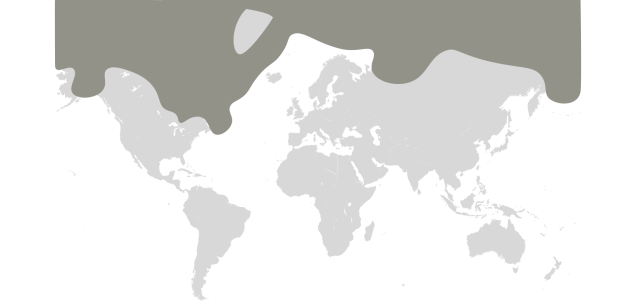
Threats that polar bears face
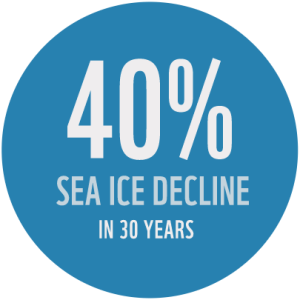
CLIMATE CHANGE
Climate change is the single greatest threat to polar bears as they are uniquely adapted to live on sea ice, and that ice is disappearing.
OIL AND GAS EXPLORATION
As sea ice declines, the Arctic is opening up to oil and gas exploration and increased shipping which may affect the delicate balance of the Arctic ecosystem.
HUMAN BEAR CONFLICT
Hungry and curious polar bears may stray into villages, leading to conflict between people defending themselves and their families.
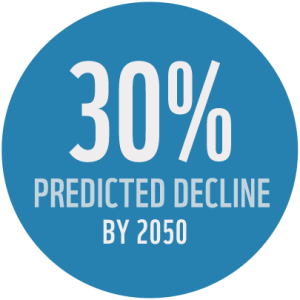
POLLUTION
Toxic chemicals and pollution in the marine environment increase in toxicity as they move up the food chain - and polar bears are the top of the Arctic food chain.
How We Can Help
We need to minimise the warming that’s melting the polar bear’s habitat: sea ice. To do this we’re working to help cut global greenhouse gas emissions and encourage the switch to renewable energy.
We work with communities across the Arctic to try and avoid them coming into conflict with polar bears. In northern Canada we’ve provided steel food storage containers so people can store their food outside without it attracting unwanted attention. Keeping some distance between polar bears and people is safer for all.
We fund research that aims to further our knowledge and understanding of polar bear populations, and how they could respond to changes in their environment.
Your adoption and support will help us:
- monitor polar bear movements, health and population sizes
- maintain a healthy Arctic environment with undisturbed ecosystems and healthy wildlife populations
- raise awareness of the threats of climate change that we all face
- work with communities to help reduce human-bear conflict
- fund our other essential work around the world
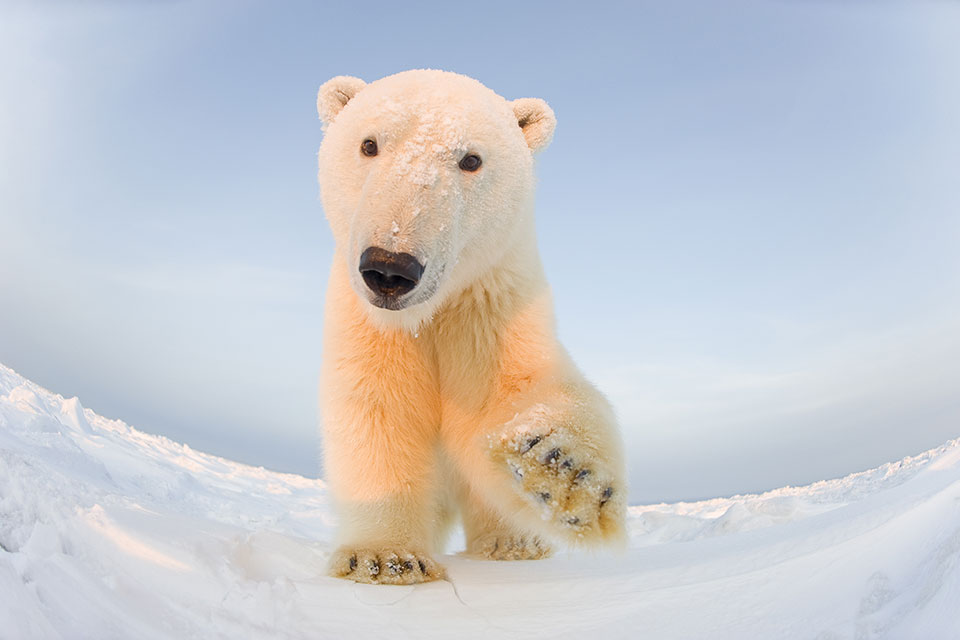
Polar bears have large paws - up to 30cm wide - which they use like paddles to help them swim. They also distribute their weight over thin ice so they don't fall through.
Last minute gift?
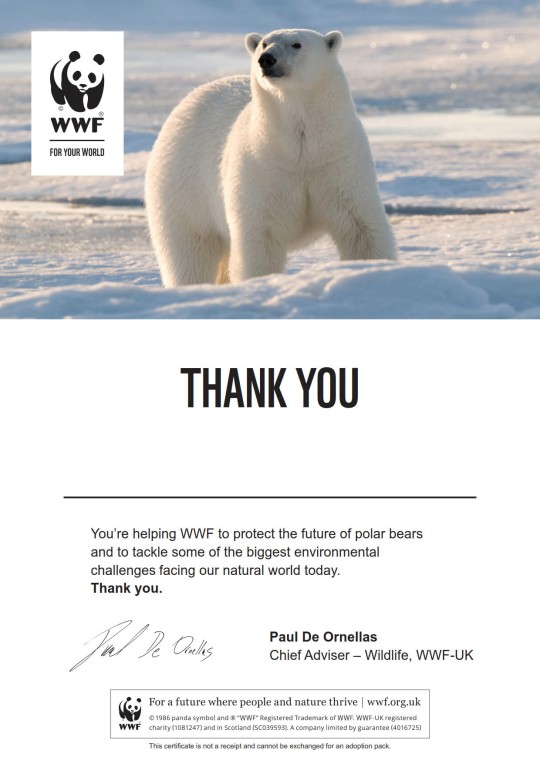
Free delivery
We offer free delivery but ask you to consider helping to cover postage with an optional £3 donation taken at checkout. This means more of your gift can go towards supporting your adoption animal and our wider work.
Your pack will be sent within 2-3 working days - but allow up to 5 working days for it to arrive.
Want to protect other marine animals too? Check out our adopt a marine animal page to find out more.
Polar Bear adoption FAQs
Yes, you can adopt a polar bear with WWF. Donations from polar bear adoptions go both directly to support polar bears, as well as to fund our wider work to protect nature and our planet. Adoptions are symbolic for donating and supporting our conservation work with different species. By adopting a polar bear, you will be supporting a whole group of polar bears, rather than one individual.
You can adopt a polar bear with WWF from just £5 a month via Direct Debit, or you can pay with a one-off payment. To adopt a polar bear with WWF, select your donation amount on the widget, click 'Adopt Now' and then complete your donation via our secure online checkout.
You can adopt a polar bear with WWF from just £5 a month via Direct Debit, or you can pay with a one-off payment. Your money goes further by Direct Debit as this supports our long-term planning and helps keep our administration costs down.
When you adopt a polar bear with WWF, your donation will not only fund programs of work that directly support polar bears, but also other vital projects to help bring our world back to life. After adopting a polar bear you'll receive a welcome pack including an optional toy and note from the WWF team welcoming you on board. We'll keep you updated on how you're supporting our vital work by sending you three adoption updates a year.
Polar bear adoptions help us; work with communities across the Arctic to reduce conflict between humans and polar bears; help monitor polar bear movements, health, and population sizes; encourage the switch to renewable energy to minimise warming affecting sea ice.
While polar bears are not classified as endangered (the species is considered 'vulnerable'), climate change and global warming pose a massive threat to the 26,000 remaining wild polar bears.
Polar bears are at risk because of the loss of sea ice, their natural habitat, due to climate change and global warming. Marine pollution and human-wildlife conflict pose additional threats to polar bear populations.
There are around 26,000 polar bears left in the wild, however climate change and global warming pose a massive threat.

